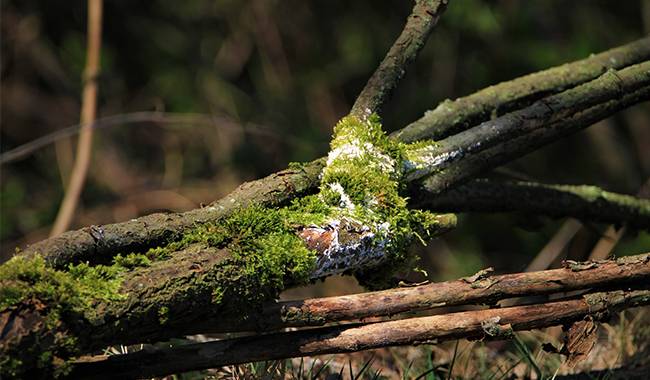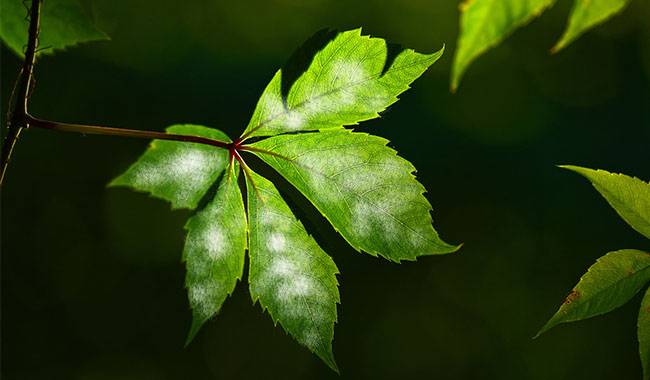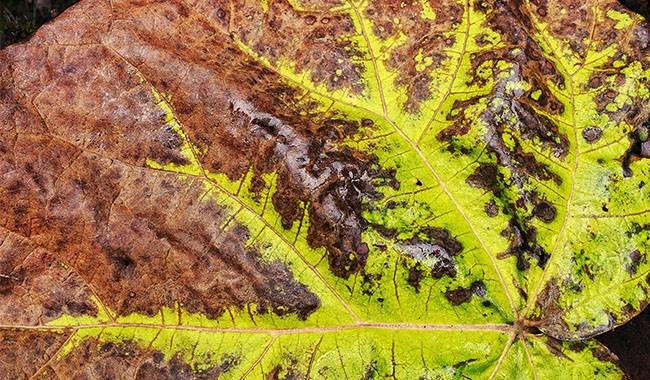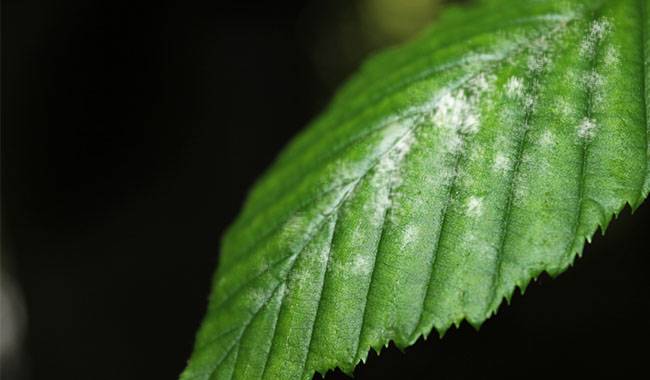
Powdery mildew is a fungal disease that occurs on all plants and is especially rampant when heat and moisture are plentiful. Our grandparents, when they came into the garden and saw the grayish-white markings on the leaves, noted with sadness that Powdery mildew, or Powdery mildew as it was earlier called, had arrived.
The truth is that if left untreated, this same gray mold can go from a harmless-looking “cannon” to a monster capable of destroying most, if not all, of the crop.
We’ll talk about what Powdery mildew is on vegetable crops, what it can do to tomatoes, cucumbers, and other vegetables, and how to beat it in this article.
POWDERY MILDEW IS A FUNGAL INFECTION
In fact, Powdery mildew is a fungal infection spread not only by wind or insects (which then actively develop) but also by tiny fungi in the soil under our feet. They are complex in name but actually belong to the simplest order of mealybugs, the red-billed fungi.
As we have already mentioned, Powdery mildew is “omnivorous” and can eat your favorite vineyards, beautiful roses, currants (as its area is significantly reduced), almost all grain crops, peaches, as well as cucumbers, zucchini and squash, beets, and other vegetable plants.
SYMPTOMS AND EFFECTS OF POWDERY MILDEW
The first symptom you should pay close attention to is of course Powdery mildew, sometimes it’s on the underside of the leaves (it’s fake Powdery mildew) and sometimes it’s on the top (it’s real).
If the kids aren’t running around the site, spreading anything powdery on the plants, and to the same planting is overgrown, the soil isn’t the first freshness, and it rains more often than we’d like, then the verdict is one – you can’t escape this plague, alas. Sometimes a white patina with visible water droplets appears, but no patina can appear without water droplets.
Usually, in vegetable crops, Powdery mildew manifests itself not only on leaves but may also appear on petioles and shoots, as well as on fruits and stems. The first to be infected are the leaves, and the closer the leaves are to the ground, the more likely they are to be infected.
The same applies to the shoots of vegetable plants – the more it is pressed into the ground, the more likely it is to be infected. Then it’s simple – the disease takes over the entire vegetable plant.
If you’re a botanist by nature, you can take a magnifying glass and look closely at the spot where the fungus has attached itself to the leaf and the sore that has formed in that spot. Obviously, the plant will starve because the fungus will suck up most of the nutrients and water, and the leaves will not be able to photosynthesize properly in the presence of the fungus.
The perennial vegetable crop becomes less winter hardy and resistant to negative environmental factors. In this case, considerable cracks sometimes form on the fruit of affected vegetable crops, which are penetrated by the infection, rot actively develops and the product is simply worthless.
WHEN IS POWDERY MILDEW MOST ACTIVE?
In vegetable crops, Powdery mildew is most active in extremely wet years (65-75%), accompanied by temperature changes of 57°F (14-26°C).
Powdery mildew in vegetable crops is activated by frequent temperature fluctuations during the day and night and by inappropriate behavior, such as improper step planting of tomatoes, which results in leaving stubs (parts of the step planting) or the bottommost leaves of the plant.
In addition, Powdery mildew will often attack vegetable crops if the gardener gives too much nitrogen fertilizer, reducing the plant’s immunity. Of course, do not plant a large number of plants in one area to save space. If you want to grow a big harvest, you must strictly adhere to the planting scheme, otherwise, water will not evaporate properly from the soil surface, creating favorable conditions for the occurrence of Powdery mildew in vegetable crops.
Often, the density of planting also dictates the watering regime – the gardener believes that because he has planted his garden so densely, with no free space, the plants are experiencing the most insane water deficit and they desperately need help. Then he grabbed the hose and turned everything into a bog, thus creating the preconditions for Powdery mildew to occur.
Irrigation failure is another cause of Powdery mildew in gardens. Often in the big summer, it appears once a weekend, we water our vegetable crops too generously and then forget about them, literally opening the door for Powdery mildew to enter our territory on its own.
PREVENTION OF POWDERY MILDEW
Naturally, Powdery mildew can be controlled, but prevention is very important and chemicals should not be applied as soon as the first signs of the disease appear on vegetable crops.
Preventive measures are necessary and effective. For example, plants must be watered only after the topsoil is dry, and if it rains and the soil is wet, it is not worth wetting unnecessarily because they are not arboreal crops and their roots are not that far from the soil surface.
A second measure is to observe crop rotations and remove all plant residues from the plot immediately after harvest. Another important preventive measure is to plant varieties and hybrids of vegetable crops that are resistant to mildew. And – don’t over-apply nitrogen fertilizer, especially during bud formation.
Speaking of fertilizers: you are warned not to apply too much nitrogen, we remind you that you need to apply potassium (8-10 grams per square meter) and phosphorus (7-9 grams per square meter) in order to provide good nutrition to the plants and improve their immunity.
However, the soil after harvesting the crop residues must be treated with fungicides, strictly according to the instructions on the package, and only with those allowed. By the way, one treatment may not be enough to completely eradicate the disease and it is better to carry out three, or even four, treatments.
THE GENERAL APPROACH TO POWDERY MILDEW TREATMENT
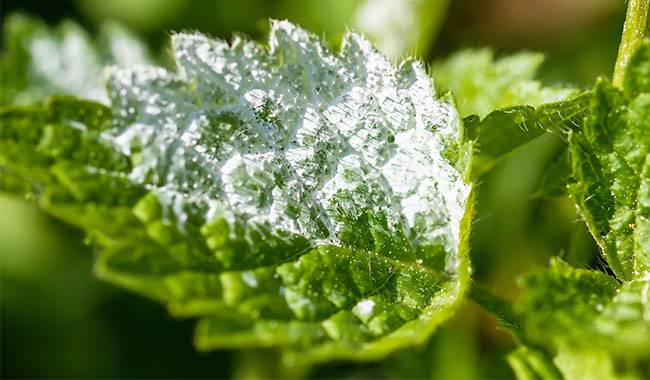
So, we have understood that Powdery mildew is a very unpleasant infection and even with all the precautions we take, it can still appear on vegetable crops and cost us at best a part of the harvest (maybe – and all of it). So we need to find a way to remove this infection from the plot and never let it in again.
If you are not a follower of chemistry and notice that the leaves on your vegetables have acquired a characteristic powder coating, then be as careful as possible, wetting your scissors with alcohol each time, wiping the cuts with wood ash, removing all the diseased leaflets from the vegetable crop from the ground and burning them outside the ground.
Reduce the amount of irrigation to a minimum, preferably – loosen the soil daily and remove noxious weeds from the plot. It’s simple: the more Powdery mildew leaves you to remove, the less chance you have of infecting other parts of the plant or neighboring vegetable crops.
After that, it is highly recommended to still treat the plants with a fungicide, so to speak, to consolidate the results. The main thing is to use freshly approved fungicides and to strictly follow the instructions on the package, which usually specify both the conditions of treatment and the dosage for each crop.
When treating with fungicides, try to moisten all organs of the vegetable plant – top and bottom – so that the fungicide covers all possible areas and leaves no infected corners.
TREATMENT OF POWDERY MILDEW OF VEGETABLES
Cucumber Powdery mildew
Powdery mildew protection for all vegetable crops, without exception, is impossible to describe successfully in one article, it is necessary to write a whole book. Let’s talk about Powdery mildew protection of the main vegetable plants, which, as a rule, are on everyone’s plots.
As soon as Powdery mildew is found on a cucumber leaf disc, the first thing to do is to stop watering and then remove all diseased leaves to thin the plant as much as possible. For example, if any of them are very strongly affected, then it is best not to treat them, but to banally remove them from the plot.
Next, be sure to loosen the soil and increase the evaporation of excess water, and you are ready for treatment. It is known that a good result can be obtained by trivially powdering the affected cucumber leaves with sulfur.
To prepare, you need to take 28-29 grams of sulfur, dissolve it in a bucket of water, fill a sprayer and try to treat all the affected leaves and the soil beneath them.
A colloidal sulfur solution also helps, but if you use the same amount of sulfur per bucket, in the first case you can spray 5-7 square meters of diseased plants, in the second case you can spray all 10.
The treatment is best applied at night. Some growers know very well that treating affected cucumber plants diluted in 10 times cowpeas is an amount sufficient for a 10 m2 seedbed.
If you decide to use a fungicide, then use strictly the instructions on the package (timing, dosage, taking everything into account). Find out if this or that drug is allowed. Earlier, copper-based preparations could cope well with Powdery mildew, but now they say they are not very useful, but you can still use fungicides.
Powdery mildew on tomatoes
Interestingly, Powdery mildew on tomatoes can occur in two species, or rather two types of fungi that affect the plant. The first species is Erysiphe cichoracearum – mainly in the open ground, that is, not in greenhouses and greenhouses.
Infection of tomato plants with this type of fungus usually occurs in March. Typically, the leaves on tomato seedlings have begun to wilt from the edges and if you delay eliminating the problem, the seedlings will usually die mediocre deaths.
The second pathogen is the Leveillula Taurica fungus, whose external signs appear as yellow spots on the upper side of the tomato leaves, but the snowy white patches typical of Powdery mildew appear first on the underside of the leaves.
To minimize outbreaks of both fungal infections, it is necessary to soak tomato seeds in a solution of “Indole-3-acetic acid (the most common natural plant hormone in the growth hormone class)” and similar drugs for several days before sowing, which promotes growth and greatly strengthens the plant’s immunity to some extent.
But what to do if an infection has already occurred in tomatoes? The first method is to treat all tomato plants, both healthy and diseased, with sodium humate. This drug promotes the inhibition of the growth of conidia until it stops completely, i.e. the growth of the infectious agent, and therefore inhibits the development of the infection itself.
Treatment must always be administered according to the instructions on the package, using the correct dose and following the recommended duration of treatment.
In addition, in the initial stages of fungal infection, respond to the destruction of Powdery mildew and prepare the biological program with at least the well-known one percent solution of “biofungicide and fungicide”, which is simply sprayed three times on the tomato plants at intervals of one week, of course, once there are signs of Powdery mildew.
According to the comments of gardeners, the so-called culture solution, i.e. “organic biological agents”, has a good effect, but it is effective against the first signs of disease, so it is necessary to carefully monitor the tomato plants to determine these very signs.
If the plant is already quite severely infected, it is necessary to use an approved available fungicide (again – strictly according to the instructions on the package).
Horticulturists recommend, especially in wet years when Powdery mildew is rampant, adding household soap to the solution (usually half a bar per 10 liters of solution) in order to retain more of the drug on the plants.
When tomato plants are lightly infested with Powdery mildew, the chemical can be left out entirely. Gardeners note that a good effect gives treatment 10% whey, and all for prevention, when wet and warm, but Powdery mildew has not yet manifested itself in the treatment when it affects only a few leaves, but they are so sorry to break.
The main thing is that after the treatment with milk whey, there was no rain, otherwise, you would have to do everything again. Some have noted the efficiency of control of Powdery mildew and ash solution – to do this, you pour about 100 grams of wood ash into a liter of water and water the infected plants with this amount, using the solution to make it reach the infected parts. The frequency of loosening the soil and watering the soil is halved and can be doubled.
Potato Powdery mildew on zucchini
How unfortunate for zucchini – another common vegetable crop in our nurseries – when the gorgeous leaves are suddenly covered with white Powdery mildew. At the first signs of infestation, when very few leaves are affected, they should be carefully cut down and burned, and the cuts should be covered with wood ash. If the shoots are affected, it is necessary to remove them as well, after which the soil should be loosened.
Their folk remedy to fight infection can be helped with a solution of soda ash (10 g per bucket of water) or 10 times diluted cowpeas (50 g per plant). Often, to help treat the affected area with a solution of grass ash, you need to take 50 grams of grass ash, dissolve it in a liter of water and spray it on the affected area with a sprayer in windless weather.
Can’t cope with folk remedies? You will have to use chemicals, again – strictly in accordance with the instructions previously helped approved drugs: “organic biological preparations”, and even sodium phosphate.
As a preventive measure against Powdery mildew, chokeberries can be treated with preparations called “chemical preparations with insecticidal properties” a week after planting, and therapeutic preparations can be used after flowering.
Remember, whether you use fungicides or folk remedies to control Powdery mildew, treat in the evening and in dry weather.
Powdery mildew on eggplant
Experienced gardeners believe that to get rid of Powdery mildew on eggplants in a short time, you can treat them with a simple solution of calcined soda in exactly the same proportions as we wrote in the section on zucchini. Then, those who want to get reliable results, let them apply a fungicide.
You need only 10 grams per bucket of water, and this rate is enough for a plot of ten square meters. By the way, during the growing season, eggplant can be treated with fungicide up to five times, mainly by strictly following the instructions on the package.
Onion Powdery mildew
Onions are often affected by false Powdery mildew, which is like hiding behind the leaves and you can’t always find it.
Usually, onion Powdery mildew appears during periods of excessive soil moisture and in densely planted areas. The first affected leaves should be pulled out and then a fungicide should be applied.
List of remedial measures against Powdery mildew (preparations)
By the way, since we cannot tell you all vegetable crops that may be affected by Powdery mildew, let us start with a list of fungicides that are effective for each vegetable crop (when used strictly according to the instructions on the package, of course).
These are copper sulfate, copper chloride oxide, colloidal sulfur, and others.
FOLK METHODS OF CONTROLLING POWDERY MILDEW
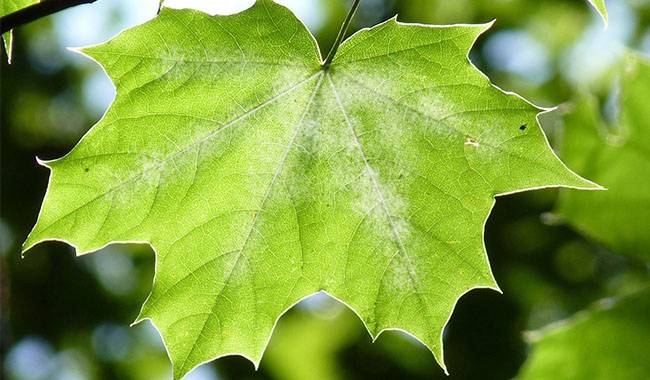
In this context, you certainly can not avoid that the folk remedies against Powdery mildew of vegetable crops, let us briefly describe.
Thus, very effective, especially in the initial stages of the disease, is to treat the affected areas of vegetable crops with a solution of soap and soda.
To do this, dilute 45-55 grams of soda ash or ordinary baking soda in a bucket of water, preferably rainwater, then add 18-20 grams of liquid soap or finely ground with ordinary soap. Next, you need to shake it well to make a homogeneous composition and treat the plant twice in a few weeks.
The second option is a solution to milk whey. To do this, pour about a liter of whey into a bucket of water that is also rain, i.e. soft water, mix well and you can use this solution for up to three treatments in dry weather, with a break after three days.
For fermented milk drinks, here is a liter of fermented fermented milk drink or yogurt, diluted in a bucket of water and treated three times on the affected plants, with a four-day interval.
A more effective decoction is the horsetail decoction, which involves cutting one hundred grams of horsetail into small pieces and pouring them into a liter of water, then steeping them under pressure for a day, boiling them for a few hours, cooling them, diluting them half as much with water, and you can spend five times treating the plants with an interval of one week. It is interesting that such an infusion can be stored for a week without losing its properties.
Mustard solution – you only need to dilute a few tablespoons in a bucket of water heated to room temperature, and this solution once every three days, you can treat infected plants.
Vegetable growers also give a good feedback about the ash solution. To prepare it, you need one kilogram of finely ground wood ash, dissolved in a bucket of water and well stirred. After this, you need to let the solution soak for a week, filter the solution and add half a bar of laundry soap to it. Treatment of sick vegetable crops with this combination can be done after a day.
Infusion of cowpeas – should be diluted 10 times with water and then stick to it for three days. After that, the infusion should be carefully drained and filtered to obtain a liquid that can pass through the sprayer. It is important to work with this infusion before the plant’s bloom, after which you can treat the soil by removing all weed residues from it.
Garlic infusion (burning mixture) – here you need to grind 50 grams of cloves, pour a few liters of rainwater, and let it soak for two days. Then you need to filter it and use it to treat only the affected areas of vegetable plants Powdery mildew, without touching healthy plants.
In short, the infusion of onion husk, which is weak with fungicides, is also a source of trace elements to strengthen the immunity of vegetable crops. All you need is 250 grams of onion husk poured into a bucket of boiling water, leave it for a few days, and then the rest of the filtered components, they can spray the plants before and after flowering, and also treat the soil to kill pests in the winter stage.
That’s all we want to tell you about the vegetable crop Powdery mildew and how to treat it in every possible way. And what methods do you use to control Powdery mildew? Tell us in the comments of the article.





